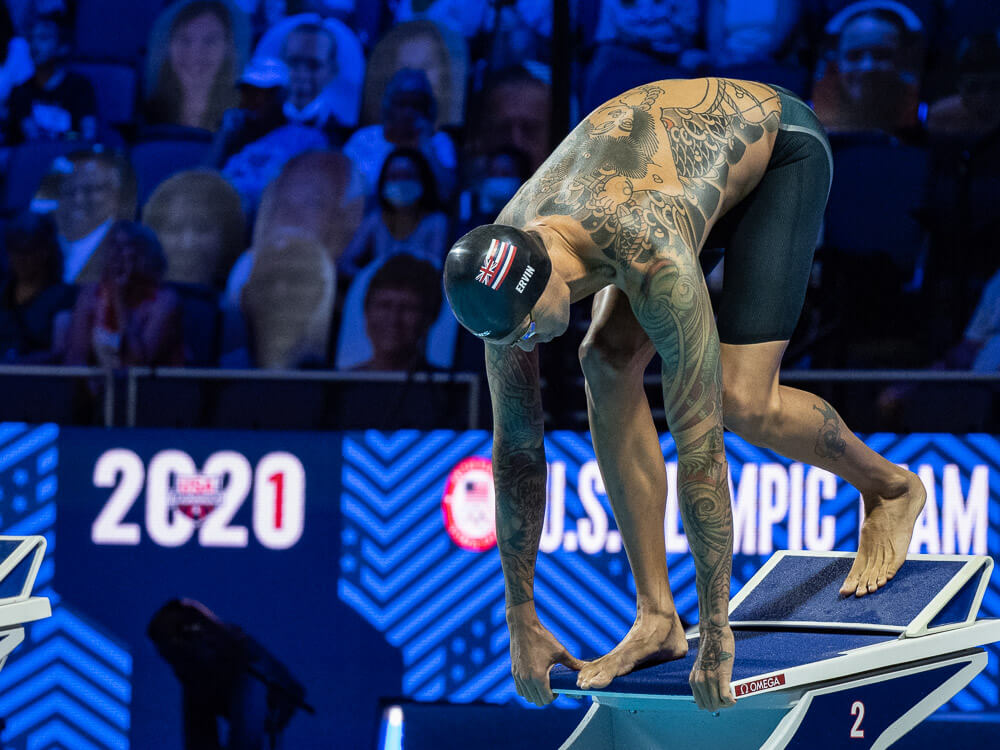Breaking Down the Basics of Sprinting and Distance Swimming: Where Do You Fit?

Breaking Down the Basics of Sprinting and Distance Swimming: Where Do You Fit?
In the world of swimming, there are many different types of swimmers. Some are good at all types and distances of races, while others excel at one in particular. Some enjoy flying across the water as fast as possible, while others prefer longer races where they can pace themselves. The one common thread across all swim teams is that there is a place for everyone in the sport. Both sprinting and distance swimming have pros and cons associated with them and both can bring pride and fulfillment to young swimmers’ lives.
Going the Distance
Distance swimmers may not be able to generate the speed or momentum needed to place high in short races such as the 50 freestyle. However, where they do excel is at pacing and demonstrating endurance. It takes a lot of mental strength and physical toughness to be able to swim for 40 or 66 lengths of the pool. In fact, many swimmers often try to avoid those races at all costs.
“Distance swimming is very much a mental game. As much as it’s about being physically able to keep moving, it’s also about keeping your head in the game. By building your mental endurance, you’ll also be improving your motor and metabolic insurance. What we mean by this is keeping focused will help your body maintain your repeated movements better and ensure your muscles get a steady supply of fuel to maintain over a longer period of time,” MaruSwim.com writes on their website.
It’s true! While distance swimming may leave a broader margin for error than all-out sprinting, keeping up a consistent and efficient technique is still critical to the success of distance-focused athletes. The 500, 1000, and 1650 all have an abundance of turns. Cutting down time on even just some of these turns leads to a faster and more effective racing strategy.
In addition to that, pacing is a skill that many distance swimmers use to their advantage. While at practice, distance swimmers should work to maintain a strong pace, as this pace will help them during meets. After all, distance swimmers become fast by being able to maintain constant speeds throughout the entirety of a long race. They are also masters of switching speeds, depending on what their race demands.
New swimmers hoping to hone their distance skills should not take the long races lightly. It’s true – those races are a lot of hard work. However, they can bring a feeling of confidence and fulfillment if done well.
Sprinting to the Finish
No matter the stroke, sprint events require strong technique and offer little to no margin for error. Swimming as efficiently as possible and maximizing every pull helps sprinters to improve their racing abilities. It also ensures that there is less chance of being touched out in a close race.
“Sprinting takes us to the edge of our capabilities and tells us exactly where we are without pride or prejudice. Sprinting builds power. When you do a sprint workout, the muscles contract with maximal force which makes them stronger and faster,” SwimGym.com says about sprint swimming.
Weight training and other dryland exercises are great activities that young sprinters can engage in in order to help them build up their strength. Races such as the 50 or 100 free – as well as the 100s of breaststroke, backstroke, and butterfly – all require a great deal of strength.
In these races, the outcome is not always dependent on who is the “better swimmer,” but is instead dependent on which swimmer has better strength and technique. Weight training can help with that by building up muscles in swimmers’ arms and legs. Swimmers who have an easier time propelling themselves through the water are more likely to out-touch their opponents.
Another factor that contributes to the success of sprinters is the idea of building strong technique. Being able to go fast is one thing. But being able to go fast efficiently could lead to greater success in the long run. Sprinters should first learn about the basics of every stroke… and then apply that to their racing.
Sprinting, like distance, is not easy. However, if one can master the art of technique and build muscle through training, there is no limit to what can be achieved.
Where Do You Fit?
Choosing whether to focus time and energy on being a distance swimmer or a sprinter doesn’t have to be difficult. In fact, I encourage young athletes to try both and enjoy different types of swimming. And if they find that they still aren’t pulled in one direction or another? Well, in that case middle distance is the perfect option!
All that really matters is that athletes find a community of people who will support them through all the touch workouts and difficult days. Those people could be sprinters, milers… or anything in between.




Another great article Riley!